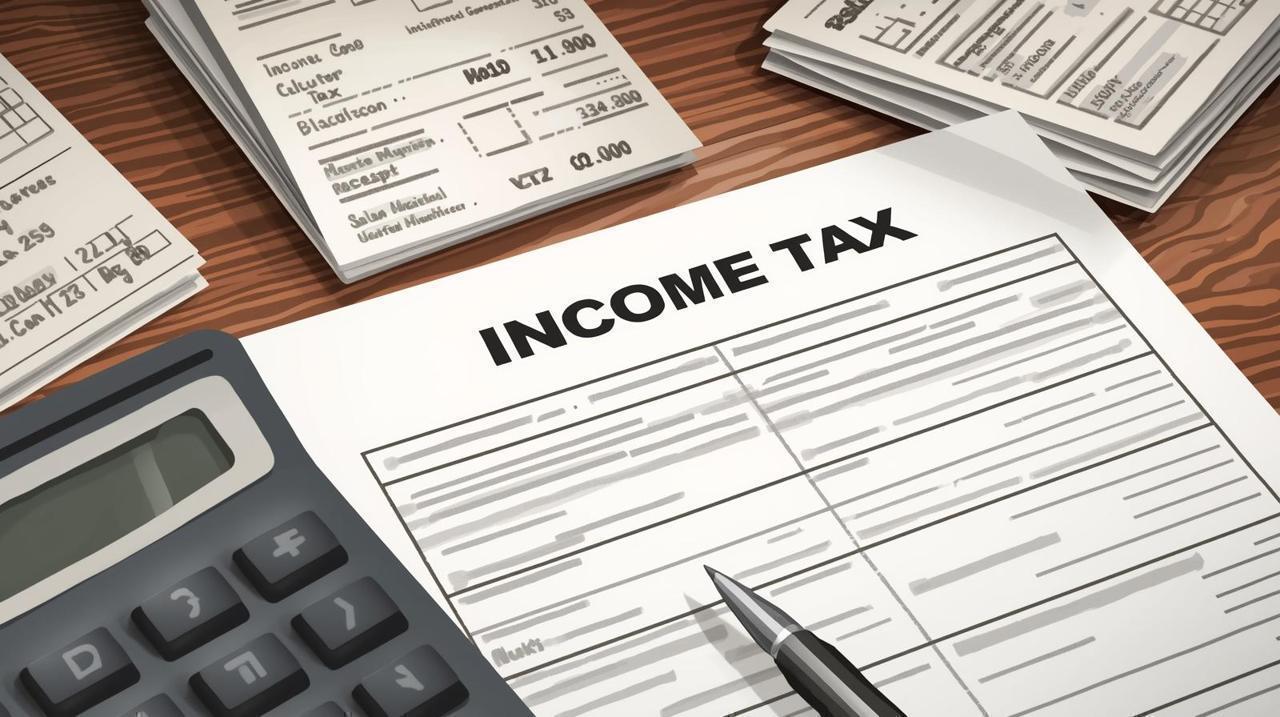You have not yet added any article to your bookmarks!

Join 10k+ people to get notified about new posts, news and tips.
Do not worry we don't spam!

Post by : Samjeet Ariff
In today’s fast-paced digital world, side hustles are no longer just a trend — they’re a way of life. From freelancers, content creators, and ride-share drivers to e-commerce sellers and consultants, millions of people are finding creative ways to earn extra income outside their full-time jobs.
However, as your side hustle income grows, so does your tax responsibility. Many first-time entrepreneurs and freelancers are caught off guard when tax season arrives, unsure of what to declare, how to file, or what deductions they’re entitled to.
This detailed guide will walk you through how side hustle taxes work, common mistakes to avoid, and smart strategies to maximize deductions — helping you keep more of what you earn this year.
If you earn money from any source other than your main job — whether it’s freelancing online, selling handmade crafts, or driving for Uber — the government views it as self-employment income.
This means that, unlike traditional employment, no one is withholding taxes for you. You’re responsible for reporting and paying income tax and possibly self-employment tax on your earnings.
All the money you earn from your side hustle must be declared as part of your total income. Depending on your country’s laws (for example, the U.S., India, or UAE expatriates with global income), this can move you into a higher tax bracket.
If your side hustle is consistent and generates regular income, it’s considered a business activity, not just a hobby — and must be reported accordingly.
In many countries, self-employed individuals pay both the employer and employee portions of Social Security and Medicare taxes. This is often referred to as the self-employment tax (around 15.3% in the U.S.).
While this may sound high, the good news is that many business expenses can be deducted to lower your taxable income.
Before diving into deductions, let’s look at some of the biggest mistakes that can cost you money — or worse, trigger a tax audit.
Not keeping proper records: Failing to track your income and expenses can make filing taxes stressful and inaccurate.
Mixing personal and business finances: Always maintain a separate bank account for your side hustle to avoid confusion.
Ignoring estimated tax payments: If you expect to owe more than a certain amount, you may need to make quarterly tax payments instead of waiting for year-end.
Claiming incorrect deductions: Overstating business expenses can lead to penalties if you’re audited.
Not reporting small or cash income: Even if you get paid in cash or through apps like PayPal, it still counts as taxable income.
Avoiding these mistakes not only helps you stay compliant but also ensures you can maximize legitimate deductions confidently.
The best way to keep more of your side hustle income is to claim every possible tax deduction. These are legitimate expenses you can subtract from your earnings, reducing your total taxable income.
Here are the most common and often-overlooked deductions:
If you work from home, you can deduct expenses related to your workspace — such as rent, internet, utilities, and maintenance — proportional to the size of your workspace.
Make sure your office area is used exclusively for work to qualify.
If your phone or internet connection is used for both personal and business purposes, you can claim a percentage of the cost related to your side hustle.
Did you buy a laptop, printer, camera, or software for your work? These business tools are deductible. Keep receipts for everything — even smaller items like pens, notebooks, and cables.
If your side hustle involves traveling to clients, making deliveries, or driving for income, you can deduct mileage, fuel, maintenance, parking, and tolls. Always maintain a logbook or use a mileage tracking app.
Expenses related to promoting your business — such as social media ads, business cards, website hosting, or branding materials — are fully deductible.
Courses, webinars, and certifications that enhance your professional skills or relate directly to your side hustle are considered legitimate tax deductions.
If you hired an accountant, tax consultant, or legal advisor, their fees are deductible as part of your business expenses.
Tools like Canva, QuickBooks, Zoom, or Adobe Suite used for business purposes are all deductible. These recurring costs can add up significantly over time.
Good record-keeping is the backbone of side hustle tax success. Whether you use an app, spreadsheet, or accounting software, make it a habit to track everything — income received, expenses paid, and invoices issued.
Here are a few tools and tips to simplify your record-keeping:
Use platforms like QuickBooks, Wave, or Notion templates to automate expense tracking.
Save digital copies of receipts — physical ones fade quickly.
Maintain a dedicated bank account and credit card for your business.
Set reminders to update your books weekly instead of waiting until tax season.
By keeping accurate records, you’ll not only make filing taxes easier but also build credibility if your side hustle grows into a full-fledged business.
If your side hustle is earning consistent income and involves recurring clients, you might consider registering it as a business. This provides several benefits:
Tax flexibility: Businesses often get more deductions and credits.
Professional credibility: Clients prefer working with registered entities.
Legal protection: Separates personal and business liabilities.
However, registration also comes with responsibilities — like maintaining proper accounts and filing business returns — so ensure you’re ready for that step.
If you earn significant income from your side hustle, you may need to pay estimated taxes quarterly instead of once a year. This prevents underpayment penalties and spreads out your financial obligations.
In many cases, paying 25% of your annual tax estimate every quarter (April, June, September, and January) keeps you on track. Consult a tax professional to calculate your estimated payments accurately.
A simple strategy many side hustlers use is the 30% rule — setting aside 30% of every payment you receive for taxes.
This creates a safety cushion so you’re never scrambling for funds when taxes are due. You can keep this money in a high-yield savings account to earn interest while waiting to pay.
Here’s how to reduce your tax burden and make the most of your earnings:
Plan purchases strategically: Buy necessary business tools or equipment before the fiscal year ends to claim deductions sooner.
Hire a tax expert: A professional can identify deductions you might overlook and help structure your income smartly.
Contribute to retirement plans: In some countries, contributions to retirement accounts like PPF, IRA, or EPF offer tax benefits.
Keep business and personal finances separate: This simplifies filing and minimizes audit risks.
When it’s time to file your taxes, you’ll need to report both your main job income and side hustle income. Depending on your jurisdiction:
Use a separate schedule or form for self-employment income (e.g., Schedule C in the U.S.).
Deduct all eligible business expenses before calculating taxable income.
Don’t forget to include digital payments, cash income, and foreign income if applicable.
If you’re not confident doing this yourself, hiring a certified tax preparer can save time and prevent errors.
Being aware of your tax obligations doesn’t just help you stay compliant — it helps you build financial freedom. When you understand how to optimize your earnings, track your spending, and plan your taxes, your side hustle becomes a sustainable income stream, not just an extra gig.
By managing taxes efficiently, you can:
Grow your side hustle into a legitimate business
Qualify for better loans and credit scores
Reinvest profits back into your business
Enjoy peace of mind during tax season
Your side hustle represents financial independence, creativity, and control over your future — but without proper tax planning, it can also lead to stress and lost income.
The key is to stay organized, claim all eligible deductions, and set aside taxes regularly. Whether you earn from freelance writing, photography, online teaching, or running an online store, the rules remain the same: plan ahead, document everything, and consult professionals when needed.
Remember — the more informed you are about your taxes, the more money you’ll be able to keep and grow this year.
#tips, #taxes, #side #hustle, #income #tax, #deductions, #personal #money #saving #planning, #small










China Sanctions 20 US Defense Firms Over Taiwan Arms Sales Dispute
China imposes sanctions on 20 US defense companies and 10 executives for supplying arms to Taiwan, e

Salman Khan’s Grand 60th Birthday Bash at Panvel Farmhouse Shines Bright
Salman Khan celebrates his 60th birthday with a grand party at Panvel farmhouse, sharing joyful mome

Thailand Defence Minister Joins Talks to End Deadly Border Clash
Thailand’s defence chief will join talks with Cambodia as border clashes stretch into a third week,

India Raises Alarm Over Fresh Attacks on Hindus in Bangladesh
India has condemned recent killings of Hindu men in Bangladesh, calling repeated attacks on minoriti

Sidharth Malhotra & Kiara Advani Celebrate Baby Saraayah’s 1st Christmas
Sidharth and Kiara share adorable moments of baby Saraayah’s first Christmas with festive décor and

South Korea Seeks 10-Year Jail Term for Former President Yoon Suk Yeol
South Korea’s special prosecutor demands 10 years for ex-President Yoon Suk Yeol on charges includin